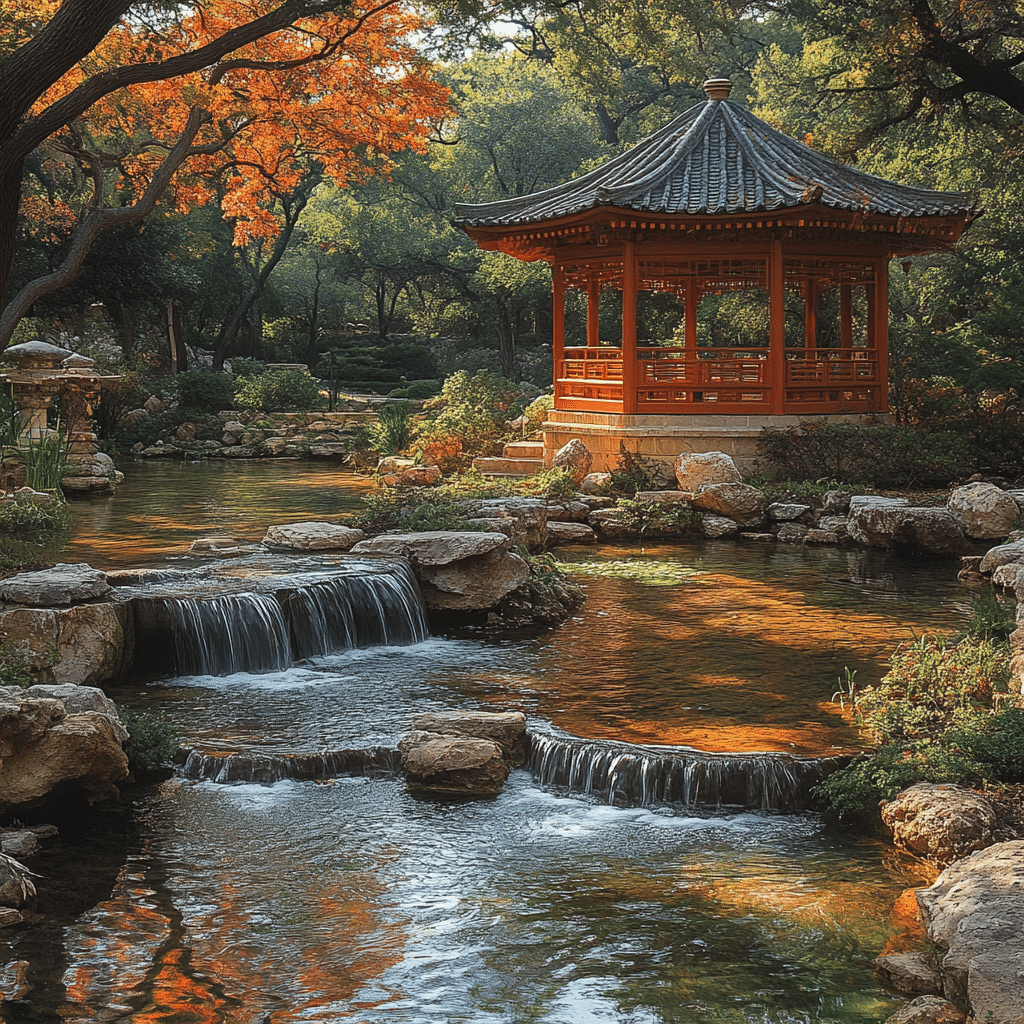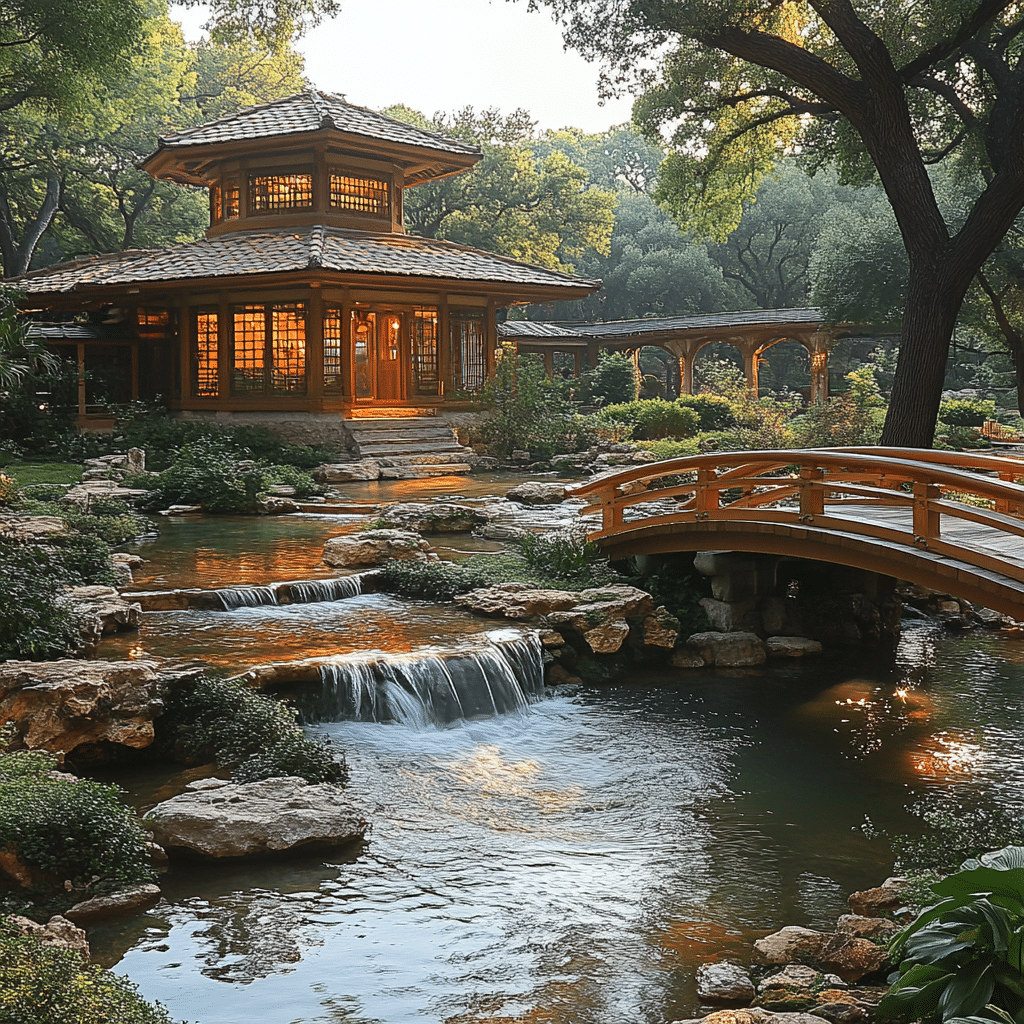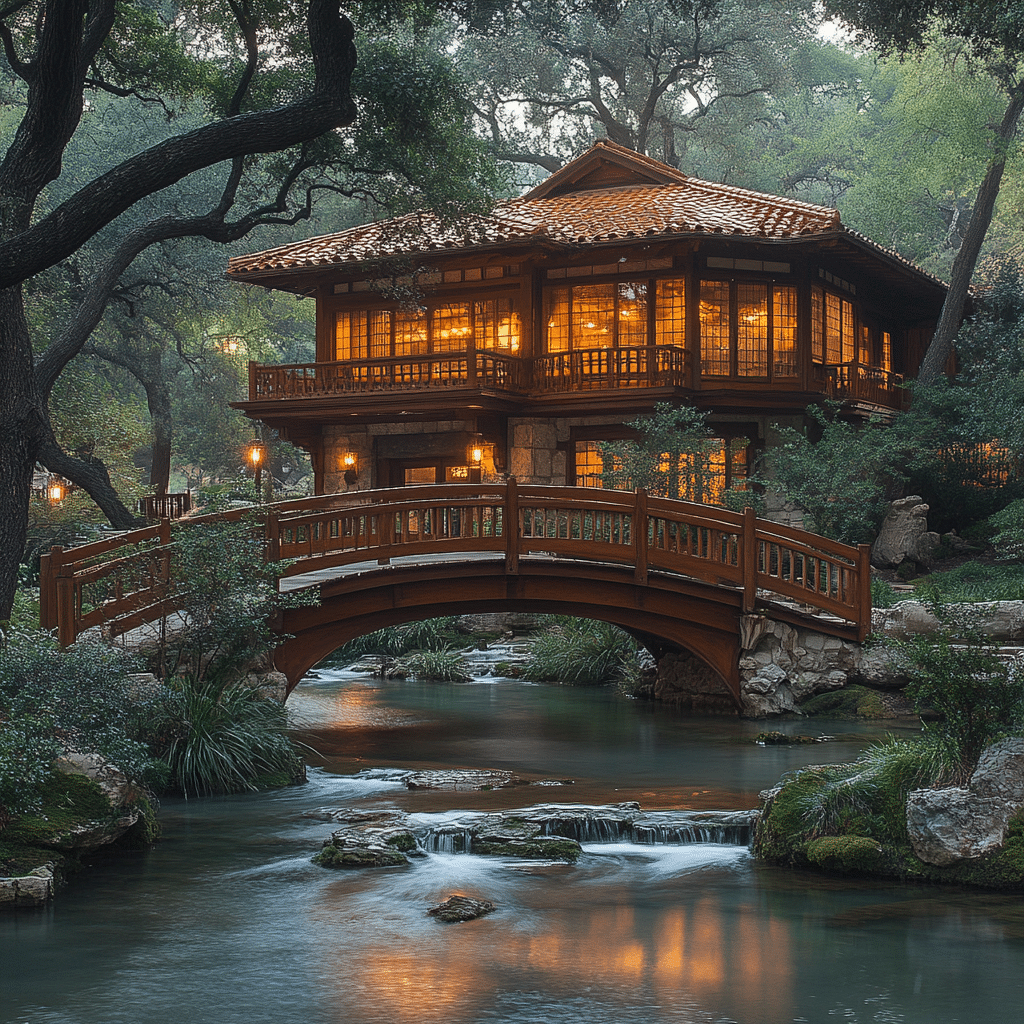The Serene Beauty of the Japanese Tea Garden San Antonio
Nestled in the heart of San Antonio, the Japanese Tea Garden San Antonio is a breathtaking 35-acre public park that whisks visitors away into a landscape of tranquility. The stunning array of vibrant flora, serene koi ponds, and winding pathways forms an oasis that invites you to relax and reflect. Not just a hidden gem anymore, this garden has become a beloved retreat for locals and tourists alike, offering a unique blend of beauty and peace.
Originally created in 1918 from an abandoned limestone quarry, the Japanese Tea Garden boasts a rich history that transforms the urban landscape into a sanctuary of nature. As you stroll through the carefully designed paths, you’ll find yourself under the lush canopies of trees, surrounded by stunning azaleas, and even the whimsical cherry blossoms that bloom each spring. These cherry blossoms draw delightful parallels to Japan’s sakura season, allowing you to feel a connection to the culture without leaving Texas. The garden exemplifies not only aesthetic beauty but also reflects a deep cultural exchange, a testament to how traditions and spaces can unite different worlds.
Whether you’re seeking a peaceful escape from the daily grind or a picturesque setting for contemplation, the Japanese Tea Garden San Antonio is a must-visit. It stands as a verdant space that nourishes both the body and the soul, allowing you to breathe deeply and soak in the atmosphere. With the vibrant colors and sounds of nature all around you, it’s easy to see why this garden captures the heart and spirit of every visitor.

Top 5 Attractions to Experience at the Japanese Tea Garden San Antonio
At the heart of the Japanese Tea Garden, the koi ponds offer a mesmerizing sight. Vibrant koi fish glide effortlessly through crystal-clear waters, making it a delightful experience for all ages. The soothing melody of waterfalls cascading into the ponds creates a natural soundtrack, providing a peaceful spot where you can pause, meditate, or simply enjoy the wonders of nature.
Stretching across the ponds, several elegantly arched footbridges give visitors a chance to appreciate the flourishing aquatic and plant life. Each bridge provides a unique vantage point, turning every step into a photo opportunity. So whether you’re an amateur photographer or a professional, you’ll find fantastic backdrops at every turn.
Although currently not serving tea, the charming tea house still offers a perfect overlook to savor the garden’s splendor. Take a moment to sit here and admire the intricate landscaping that changes with the seasons—a reminder of the beauty around you.
The garden isn’t just a visual wonder—it’s also a lively hub for cultural activities throughout the year. Events such as the Cherry Blossom Festival showcase traditional Japanese performances, art exhibits, and workshops on origami and calligraphy. The garden embraces cultural education, inviting community participation that enriches the experience for everyone.
After soaking in the beauty of the garden, you might be craving a delicious meal. Sakura Japanese Steakhouse is renowned for its lively teppanyaki-style cooking that will entertain as much as it fills your belly. If you’re in the mood for sushi, both Tokyo Japanese Steakhouse and Osaka Japanese Steakhouse offer mouthwatering selections. For those seeking a unique twist, Fuji Steakhouse serves up a fusion that will leave your taste buds dancing. Each restaurant provides an excellent post-garden dining experience, keeping you nourished and satisfied.
Why the Japanese Tea Garden San Antonio is a Must-Visit
The Japanese Tea Garden has a charm that goes beyond its visual allure. It serves as a crucial green space in San Antonio’s urban environment, providing a heartbeat of peace amidst the city’s hustle and bustle. Visitors can often be found engaging in yoga, mindfulness exercises, or simply curling up with a good book in the quiet corners of this serene retreat.
Moreover, its strategic location adjacent to the San Antonio Zoo and Brackenridge Park means it’s easily accessible for those planning a full day of exploration. Whether you’re a local or just passing through, you’ll find that spending time in the Japanese Tea Garden enhances your connection to San Antonio, making it a living testament to the city’s rich heritage and community spirit.
As soon as you step into the Japanese Tea Garden San Antonio, time seems to slow down. The garden beckons you to take a break from your busy schedule and relish the simple joys of nature and culture. It’s a delightful destination for anyone looking to refresh their spirit while enjoying the diverse offerings of this cherished park.

A Unique Oasis in the Heart of San Antonio
The Japanese Tea Garden is a remarkable showcase of beauty and cultural intertwining. Every element, from the winding paths to the lively koi ponds, invites you to pause and soak in the moment. This hidden oasis allows visitors to appreciate traditional Japanese garden designs within the context of the American Southwest, offering an experience rich in both culture and tranquility.
As San Antonio continues to expand and evolve, the Japanese Tea Garden stands as a reminder of the importance of preserving natural spaces that add value to our lives. Whether you’re there for a quiet stroll, cultural festivities, or even tasty treats at a nearby steakhouse, visiting this location adds a unique thread to the vibrant tapestry of life in the city. So don’t miss this free oasis—take a trip to the Japanese Tea Garden San Antonio and discover its enchanting beauty for yourself!
Japanese Tea Garden San Antonio: Fun Trivia and Interesting Facts
A Slice of History
Did you know that the Japanese Tea Garden San Antonio has a fascinating backstory? Built in the early 20th century, this peaceful haven was initially a rocky limestone quarry. After some clever renovations in the 1920s, it transformed into a lush garden that reflects traditional Japanese landscaping aesthetics. Speaking of transformations, if you’re curious about the film industry, check out how some movies also thrive on innovative settings—look Movies. You’ll find that creativity thrives no matter where you are.
Seasonal Beauty and Unique Flora
As you meander through the winding paths of the garden, you might come across a variety of plants that bloom seasonally. Cherry blossoms are particularly stunning in spring, drawing visitors from all over! If you fancy a day of browsing through unique finds and hidden treasures, the Brimfield flea market might just be the place for you. Just like the diverse flora in the gardens, Brimfield offers a mix of surprises around every corner.
Cultural Connections
Cultural experiences abound at the Japanese Tea Garden San Antonio, with its serene koi ponds and authentic Japanese structures. It’s a perfect spot to feel connected to a different culture. Fun fact: this garden is actually home to around 50 koi fish, adding to its charm! And speaking of cultural connections, if you’re planning to travel, don’t miss out on looking for Flights To Pittsburgh where you can explore even more stunning destinations. Whether you’re visiting the garden or hopping on a plane, there’s always more to explore.

How long does it take to walk through the Japanese Tea Garden in San Antonio?
It usually takes about 7 minutes to walk through the Japanese Tea Garden, as it’s a short loop trail that’s generally easy to navigate.
How much does it cost to go to the Japanese Tea Garden in San Antonio?
Visiting the Japanese Tea Garden in San Antonio is free for everyone, so you can enjoy the beautifully landscaped area without spending a dime.
What days is Japanese Tea Garden free?
Admission is free before 10 AM on Mondays, Wednesdays, and Fridays. Also, San Francisco residents with ID, members of Gardens of Golden Gate Park, Veterans, and those eligible for the Museums for All program can enter at no cost.
Can I bring my dog to the Japanese Tea Garden San Antonio?
Yes, you can bring your dog to the Japanese Tea Garden, but be sure to keep them on a leash while you enjoy the scenery together.
Can you bring food to the Japanese Tea Garden?
Food isn’t allowed in the Japanese Tea Garden, but you can grab a bite to eat at nearby eateries.
What do you wear to a Japanese tea house?
When visiting a Japanese tea house, wearing informal and modest clothing enhances the experience, like a kimono, but comfortable casual attire is perfectly fine too.
What is the purpose of a Japanese tea garden?
The purpose of a Japanese tea garden is to create a serene, meditative space that reflects nature, encouraging visitors to find tranquility and harmony.
How long would you spend at Japanese Gardens?
Most people spend about an hour wandering through the Japanese Gardens, but it can vary depending on how much you want to explore.
How much does it cost to go to the Japanese Friendship garden in Balboa Park?
Visiting the Japanese Friendship Garden in Balboa Park costs $12 for adults, while kids, seniors, and military members can usually get a discount.
What tea do Japanese drink in the evening?
In the evening, many Japanese people enjoy drinking hojicha, a roasted green tea that’s nice for winding down.
How much does it cost to go to Golden Gate Park?
There’s no cost to access Golden Gate Park itself, but some attractions within the park may have fees.
How long is the conservatory of flowers show?
The Conservatory of Flowers show runs for about 45 minutes, offering a glimpse into its beautiful collection of plants.
Can dogs go to the Pearl San Antonio?
Yes, dogs are welcome at the Pearl San Antonio, but make sure you follow any specific pet regulations in the area.
Can I take my dog to San Antonio Zoo?
You can’t take your dog into the San Antonio Zoo, as they don’t allow pets for the safety of all animals and guests.
Can I bring my dog to Japan?
Bringing your dog to Japan is possible, but you’ll need to follow specific regulations for pet entry, including vaccinations and quarantine rules.
























